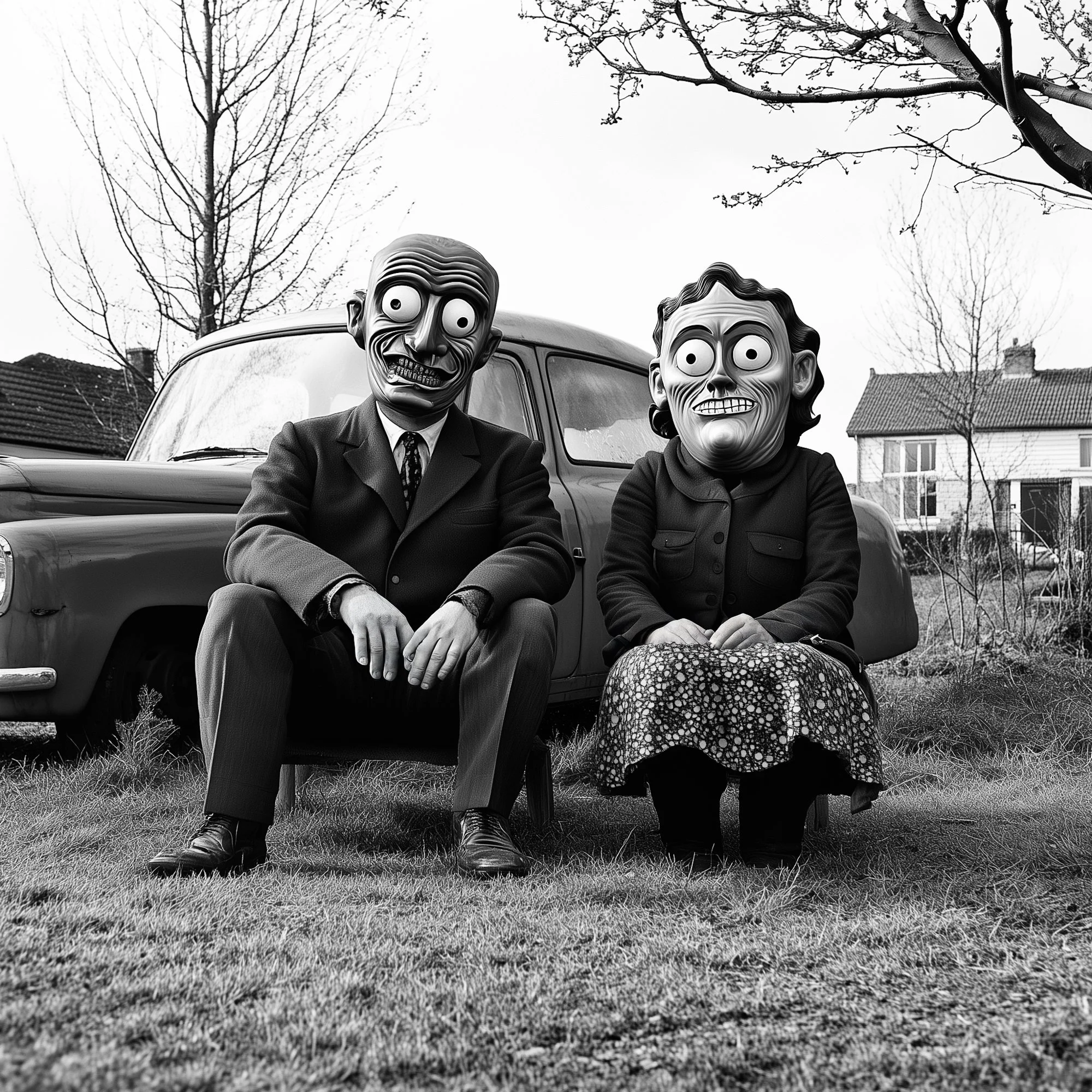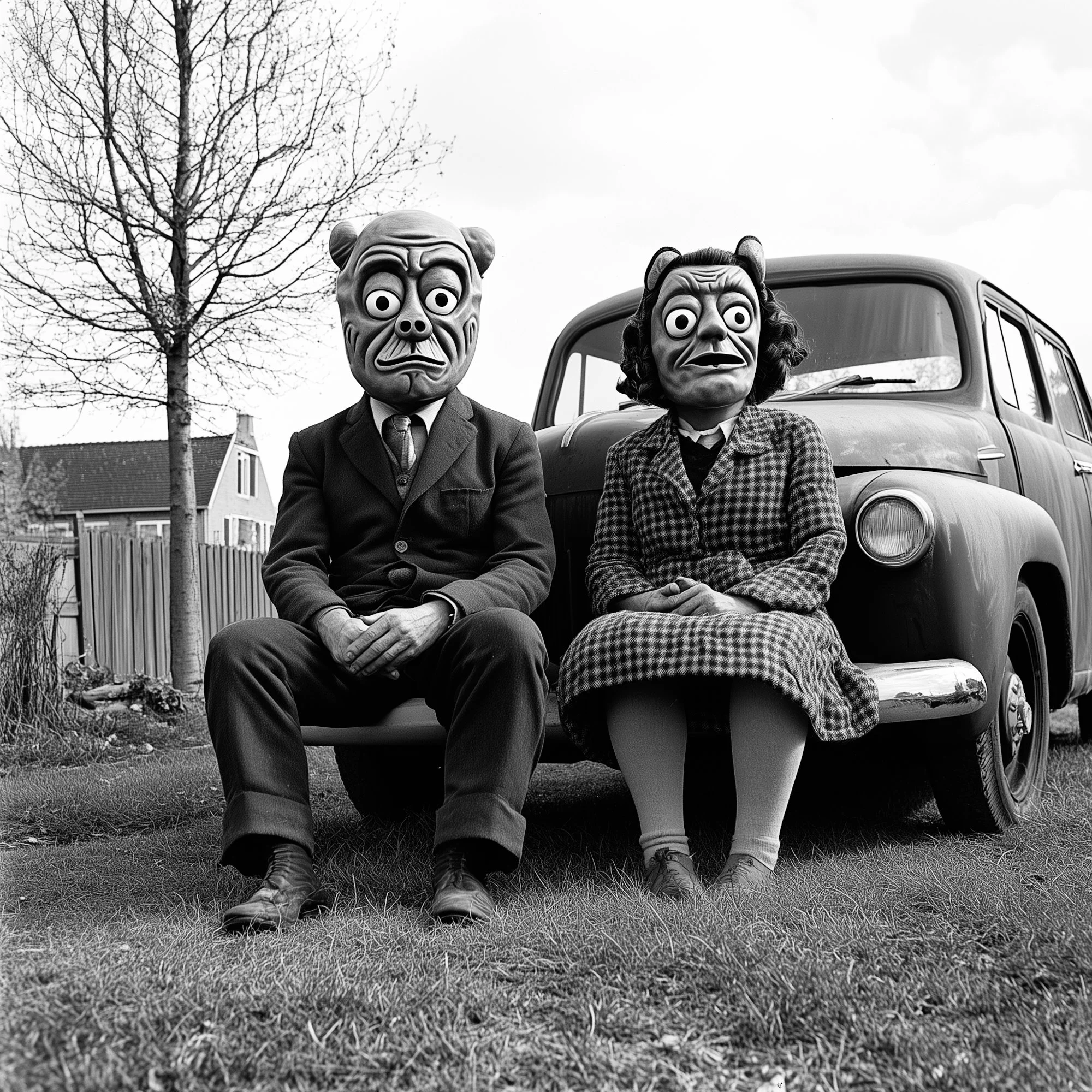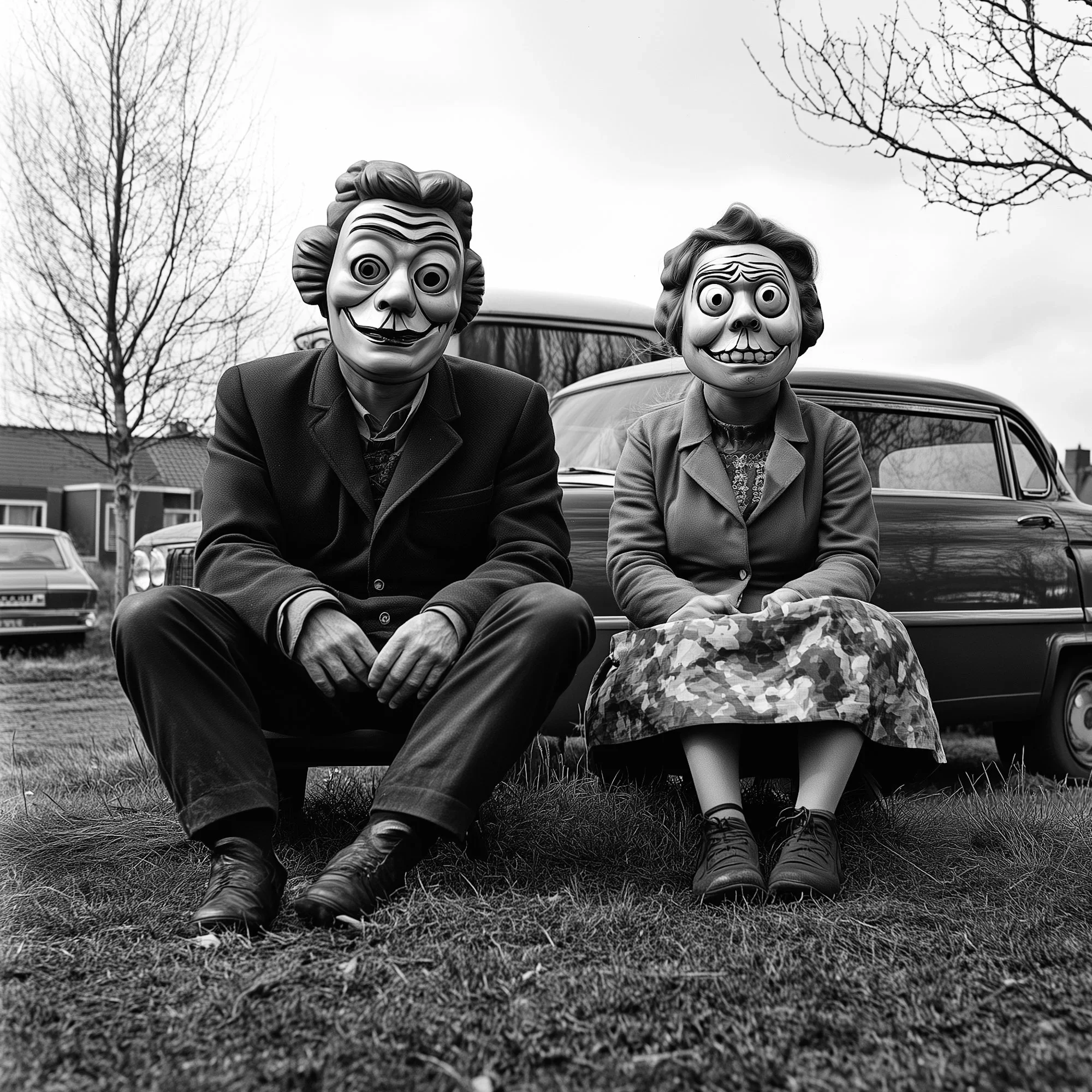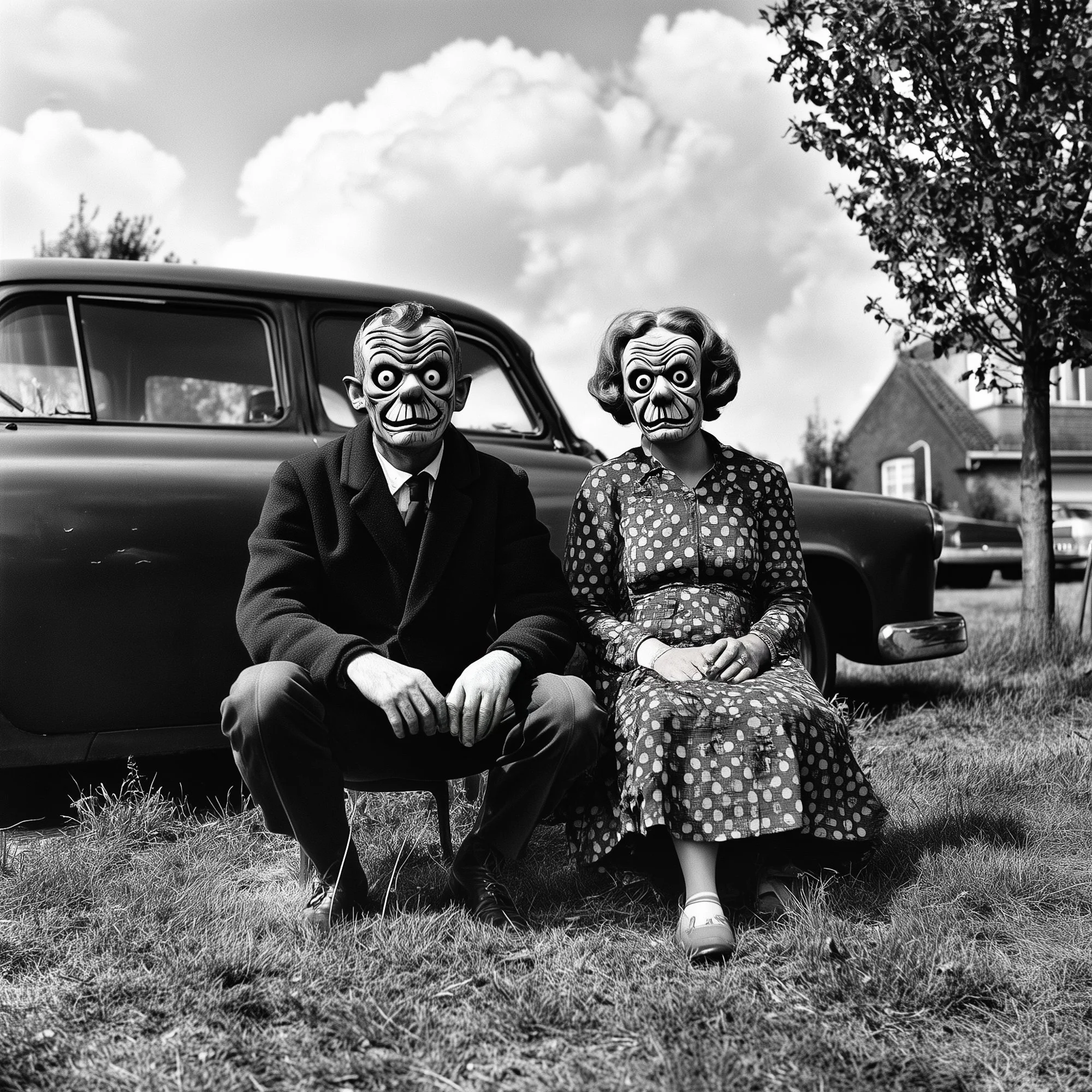The Swiss.
They arrived in an older red car, polished and humming softly, like it had been freshly tuned just for the journey. The Swiss couple stepped out without hurry—he in a well-pressed suit, she in a heavy wool cardigan and a skirt dotted with quiet flowers. They looked like they had stepped out of another time, or perhaps into one.
They brought their own chairs and sat near the edge of the village green, backs straight, hands folded. From a small leather bag came their lunch: thick slices of Zopf bread, cubes of Sbrinz, a tightly wrapped bundle of Bündnerfleisch, and a thermos of warm Ovomaltine. A bar of dark chocolate followed, divided evenly in silence.
They said little. Observed much. A nod here, a glance there. No sunglasses, no camera, no music. Only a sense of exactness, as if their being here had been calculated, pencilled in years ago.
They left just before dusk, without speaking to anyone.
Only the flattened grass where their chairs had stood remained.
In Saint-Mystère, no one tried to smooth it out.







